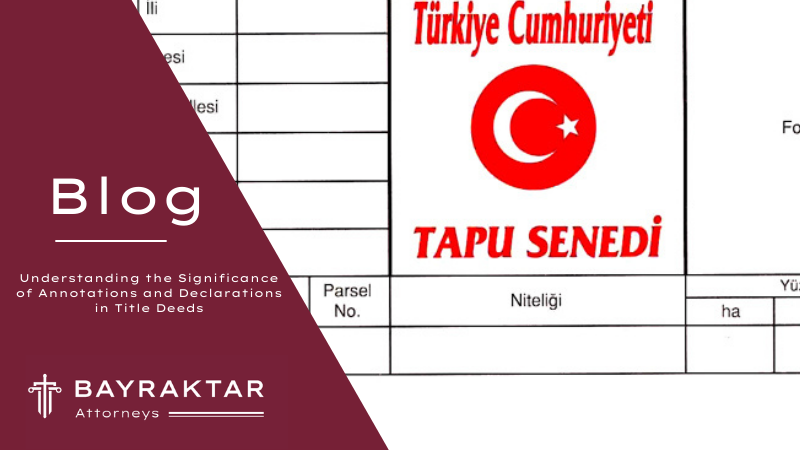
The title deed stands as a cornerstone in real estate transactions, encapsulating the intricate web of rights and responsibilities governing a property. Within this legal document lie two pivotal elements: annotations and declarations, each bearing crucial implications for property owners and prospective buyers alike.
Annotations in the Title Deed
Annotations serve as markers denoting rights or obligations tied to a property. These could stem from agreements or court rulings involving the property owner and other parties. For instance, a mortgage annotation signifies an existing loan against the property, while a seizure annotation indicates legal action against it.
Some of the most frequently encountered annotations include:
TEK / TEDAŞ Lehine Kira Şerhi (Lease Annotation in favor of TEK/TEDAŞ): This annotation designates areas for transformers or electricity lines passing through the property parcel, typically for a symbolic price.
Annotation of the Promise of Sale: Issued by notaries, this annotation records a promise of sale of the property. If the sale doesn’t occur within five years, the annotation may be canceled, though it remains valid for ten years between parties and five years for third parties.
Declarations on the Property
Contrary to annotations, declarations furnish vital insights into the physical attributes and status of a property. They encompass details like legal status, boundaries, area, and structural features, painting a comprehensive picture of the property’s condition.
Other common declarations include:
Consolidation (Tevhit): The merging of adjacent land parcels into a single title deed.
Separation (İfraz): The division of a single parcel of land into multiple parts, each registered separately.
Usufruct Right: The right to fully benefit from and use a property, established through various means including registration in the land registry for immovables.
Right of Usufruct: Grants priority in purchasing an immovable property over other buyers.
Navigating Property Transactions with Annotations
Navigating the sale or transfer of a property with annotations demands a meticulous examination of these records. Given their pivotal role in ascertaining a property’s value and facilitating transactional processes, a comprehensive review becomes imperative.
Furthermore, the dynamism of annotations and declarations necessitates vigilance. Outdated records, such as unresolved mortgage annotations, can impede transactions, underscoring the importance of timely updates.
Removing Annotations and Declarations
The removal or modification of annotations and declarations hinges on their nature—whether permanent, temporary, or explanatory. While some annotations like lease agreements may be expunged upon expiration, others necessitate judicial or administrative intervention.
The Family Home Annotation: Preserving Unity and Security
Central to familial cohesion, the family home annotation safeguards properties designated as such against unilateral transactions by married couples. This legal safeguard ensures mutual consent in property dealings, fortifying the foundation of familial unity.
The Imperative of Title Searches
In the realm of property acquisition, conducting thorough title searches emerges as a non-negotiable step. These searches unravel potential encumbrances or discrepancies, safeguarding buyers against legal entanglements and fraudulent transactions.
From identifying existing pledges to verifying ownership legitimacy, title searches furnish invaluable insights, empowering buyers to make informed decisions. Lenders, too, leverage these searches to mitigate financial risks, reaffirming their confidence in the property’s integrity.
In essence, the efficacy of title searches transcends mere due diligence—it serves as a bulwark against legal quagmires and instills confidence in property transactions. Amidst the labyrinth of annotations and declarations, a diligent examination emerges as the cornerstone of informed decision-making in real estate acquisitions.
Take the first step towards informed property transactions by exploring our comprehensive resources on real estate law and the role of attorneys. Empower yourself with knowledge and embark on your real estate journey with confidence.







